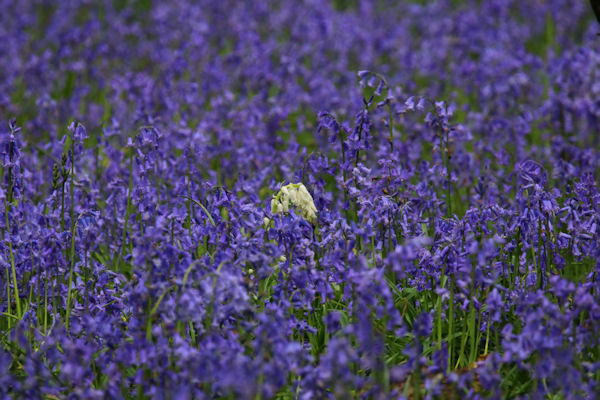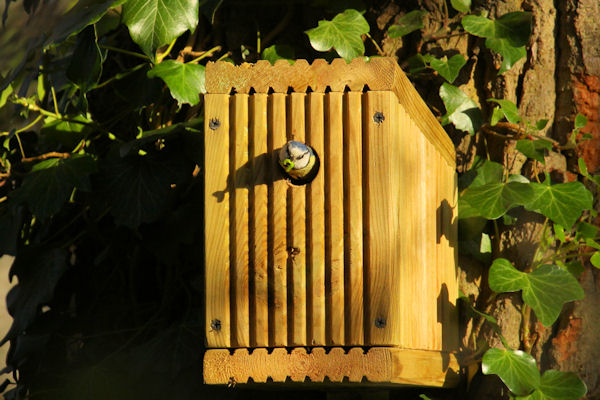May 2023 in Bicknor Wood
May is the month of Bluebells and Hawthorn. The profusion of flowers brings a spectacle for the eyes. The scent of Bluebells is delicate, but noticeable due to the huge numbers of flowers.
The Hawthorn's scent is more powerful and pungent. It contains one of the chemicals (trimethylamine) associated with decaying flesh. Even so it is still valued in the perfume trade, although it is now made synthetically.
Hawthorn flowers vary between white and pink and a tree that produces white flowers one year might produce pink flowers in subsequent years, or vice versa. This one flowered on the north side of the path as it runs behind the bird feeders. Does anyone recall which colour it was last year?
The peak of the Bluebell show lasted into the second week of May before signs suggested that it was beginning to fade. The whole plant, flowers, leaves and bulb is toxic. Rabbits don't eat them, but they do look charming when caught amongst them.
There were a few oddities, which I am still struggling to explain. Thoughts on a postcard please.
Birds in the boxes were busy during this month as their broods hatched and the ceaseless feeding began. On May 2nd, hungry chicks were being fed in 9 of the boxes. On May 23rd, feeding was noted in 12 boxes.
In all, at least 18 boxes had attracted the attentions of prospective parents. The open-fronted boxes have not been checked. They are positioned in thick cover and not observable from the paths. They are preferred by Robins and Wrens who may already be preparing for a second brood. It is best to leave them undisturbed for a while yet.
Odd behaviour was observed at box 8 on May . One adult bird called and flapped from outside the box, waving a tempting morsel as if trying to coax out some fledging chicks. But the parents possibly had different ideas and it ended up as a face off at the entrance.
Fledging in most of the boxes would have probably occurred before the end of the month, but some suffered damage and may have been predated. Beefing up the defences was never going to prevent the woodpeckers from gaining entry, but they would have had to work a bit harder and the nesting birds would have had a better chance to defend their chicks.
The exciting story was the Nuthatches in box 19. By the 25th, the chick was hanging out of the box waiting for its parents to arrive with food. Note the yellow skin in the corners of the gape which indicates it as a very young bird.
A Treecreeper was also seen carrying food which is confirming evidence of chicks in their nest.
A Collared Dove was reported to be sitting on eggs. She brooded them for a few days, but on May 20th, the nest was found to be empty and abandoned.
The first Sweet Chestnut budburst was noted on May 3rd and by the end of the month, the canopy was complete and the wood was cool and shady.
The oaks have proved themselves to be variable in coming into leaf. The picture below shows an English Oak on the left and a Sessile Oak on the right.

















Comments
Post a Comment